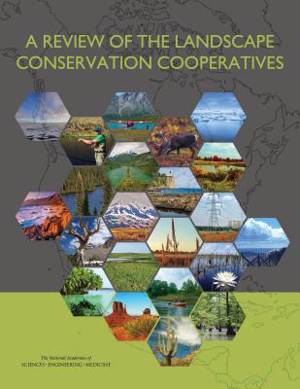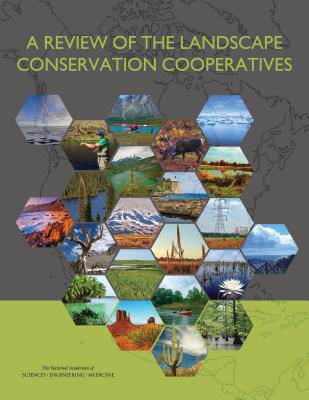
- Retrait gratuit dans votre magasin Club
- 7.000.000 titres dans notre catalogue
- Payer en toute sécurité
- Toujours un magasin près de chez vous
- Retrait gratuit dans votre magasin Club
- 7.000.0000 titres dans notre catalogue
- Payer en toute sécurité
- Toujours un magasin près de chez vous
A Review of the Landscape Conservation Cooperatives
National Academies of Sciences Engineering and Medicine, Division on Earth and Life Studies, Board on Agriculture and Natural Resources, Board on Atmospheric Sciences and Climate, Committee on the Evaluation of the Landscape Conservation CooperDescription
The United States' tradition of conserving fish, wildlife, habitats, and cultural resources dates to the mid-19th century. States have long sought to manage fish and wildlife species within their borders, whereas many early federal conservation efforts focused on setting aside specific places as parks, sanctuaries, or reserves. With advances in landscape ecology over the past quarter-century, conservation planners, scientists, and practitioners began to stress the importance of conservation efforts at the scale of landscapes and seascapes. These larger areas were thought to harbor relatively large numbers of species that are likely to maintain population viability and sustain ecological processes and natural disturbance regimes - often considered critical factors in conserving biodiversity.
By focusing conservation efforts at the level of whole ecosystems and landscape, practitioners can better attempt to conserve the vast majority of species in a particular ecosystem. Successfully addressing the large-scale, interlinked problems associated with landscape degradation will necessitate a planning process that bridges different scientific disciplines and across sectors, as well as an understanding of complexity, uncertainty, and the local context of conservation work. The landscape approach aims to develop shared conservation priorities across jurisdictions and across many resources to create a single, collaborative conservation effort that can meet stakeholder needs.
Conservation of habitats, species, ecosystem services, and cultural resources in the face of multiple stressors requires governance structures that can bridge the geographic and jurisdictional boundaries of the complex socio-ecological systems in which landscape-level conservation occurs. The Landscape Conservation Cooperatives (LCC) Network was established to complement and add value to the many ongoing state, tribal, federal, and nongovernmental efforts to address the challenge of conserving species, habitats, ecosystem services, and cultural resources in the face of large-scale and long-term threats, including climate change. A Review of the Landscape Conservation Cooperatives evaluates the purpose, goals, and scientific merits of the LCC program within the context of similar programs, and whether the program has resulted in measurable improvements in the health of fish, wildlife, and their habitats.
Spécifications
Parties prenantes
- Auteur(s) :
- Editeur:
Contenu
- Nombre de pages :
- 150
- Langue:
- Anglais
Caractéristiques
- EAN:
- 9780309379854
- Date de parution :
- 28-11-16
- Format:
- Livre broché
- Format numérique:
- Trade paperback (VS)
- Dimensions :
- 213 mm x 277 mm
- Poids :
- 430 g

Les avis
Nous publions uniquement les avis qui respectent les conditions requises. Consultez nos conditions pour les avis.






